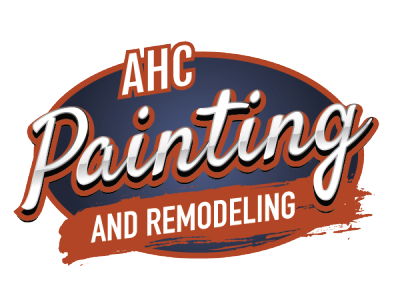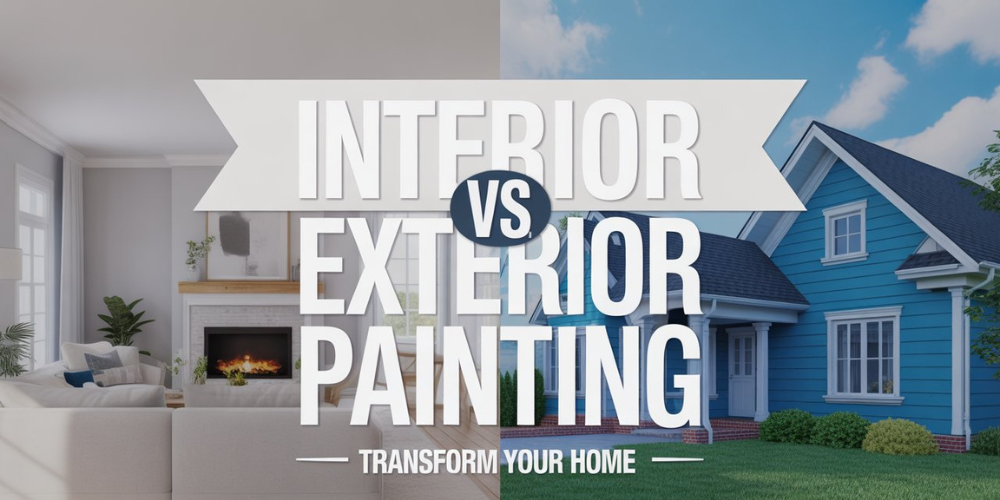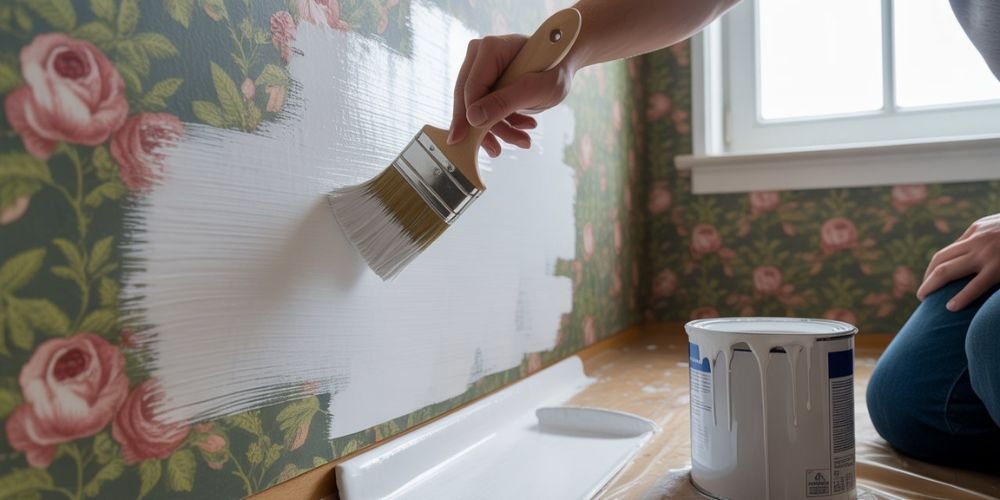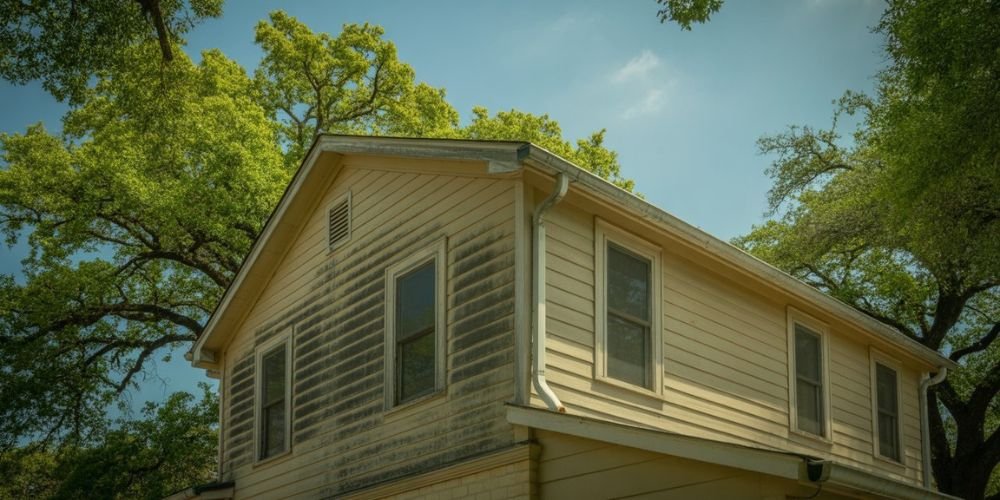Painting can totally change the look and feel of a setting or add features to the curb appeal of your own house- but picking the correct paint is more important than most people understand. Interior vs exterior paint can be considered one of the greatest mistakes by homeowners. They may seem the same when in a can, but they are made for entirely different purposes.
This blog will clarify the difference between interior and exterior paint, why either of them is made the way it is, and the dangers of using the wrong type. We will also address frequently asked questions such as “Can you use exterior paint inside?” or “Can you use interior paint outside?”.
Understanding the Difference Between Interior and Exterior Paint
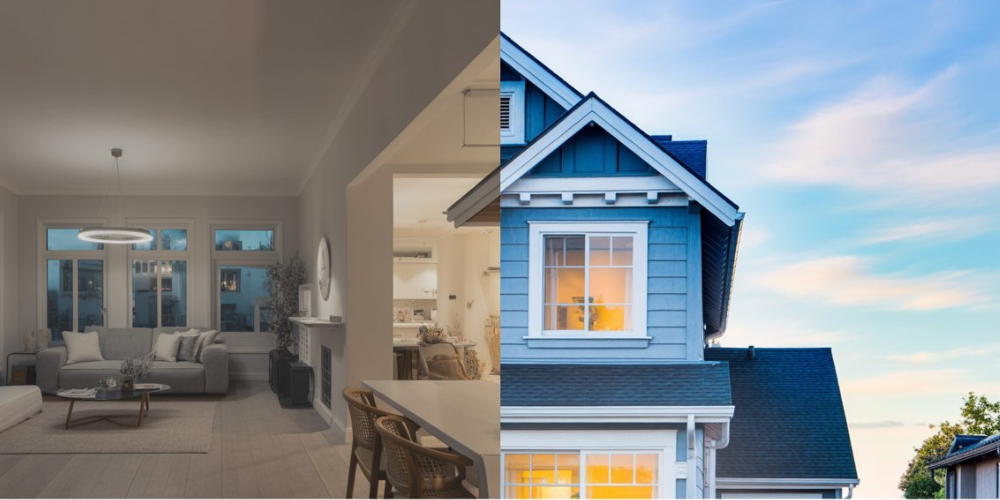
Know the difference in how interior and exterior paints are designed before you start.
Below are the key differences in ingredients and performance:
Interior paint:
- It is low odour, low VOC (volatile organic compounds), and health safety formulated to look good but smell better
- Offers smooth finishes for aesthetics
- Focuses on stain resistance and easy cleaning
- Not designed to withstand UV rays, rain, or extreme temperatures
Exterior paint:
- Formulated with weather-resistant resins
- Includes additives to resist mildew, fading, and cracking
- Designed to expand and contract with temperature changes
- Often has stronger odours and higher VOCs
Comparison Table:
| Feature | Interior Paint | Exterior Paint |
| Primary Purpose | Beauty, smooth finish, washable surface | Durability against sun, rain, and wind |
| Additives | Stain blockers, low-VOC | Mildew inhibitors, UV protection |
| Flexibility | Less flexible | Highly flexible |
| Durability Indoors | Excellent | Overkill and may emit fumes |
| Durability Outdoors | Poor | Excellent |
Being aware of the difference between interior and exterior paint will enable you to match the product with the place.
Risks of Using the Wrong Paint
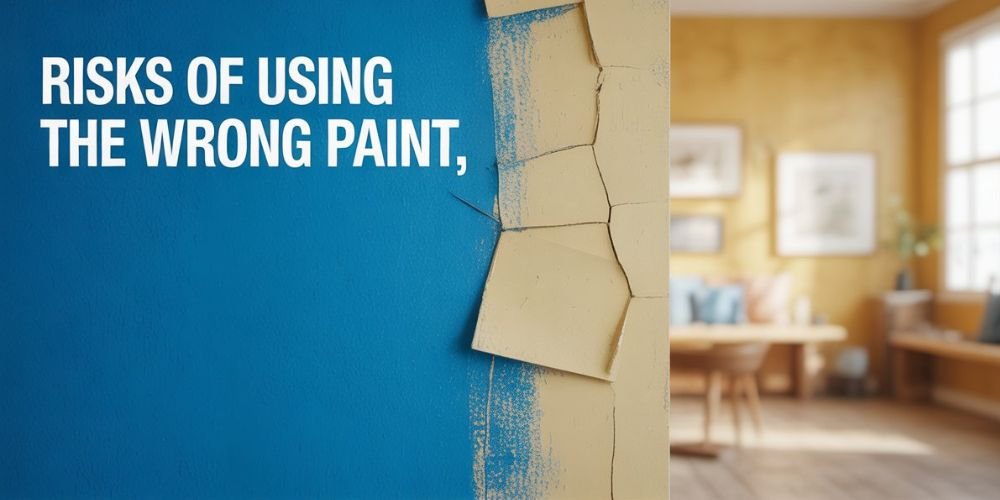
One of the questions that people can always pose is, “Can you use exterior paint inside?” or “Can you use interior paint outside?” The short answer is: you shouldn’t.
Using Exterior Paint Indoors
Using exterior paint indoors might emit more fumes since the paint has not been designed to be used in an enclosed area. It may also be slower to cure and may not provide you with the smooth finish that you desire inside.
Using Interior Paint Outdoors
Using interior paint in an outdoor setting can make it fade, crack or peel within no time. It will be destroyed by rain, direct sunlight, and temperature fluctuations since it cannot withstand these circumstances.
To summarise it all–use the proper paint in the proper job, even though it may call for purchasing two varieties.
Benefits of Choosing The Right Paint
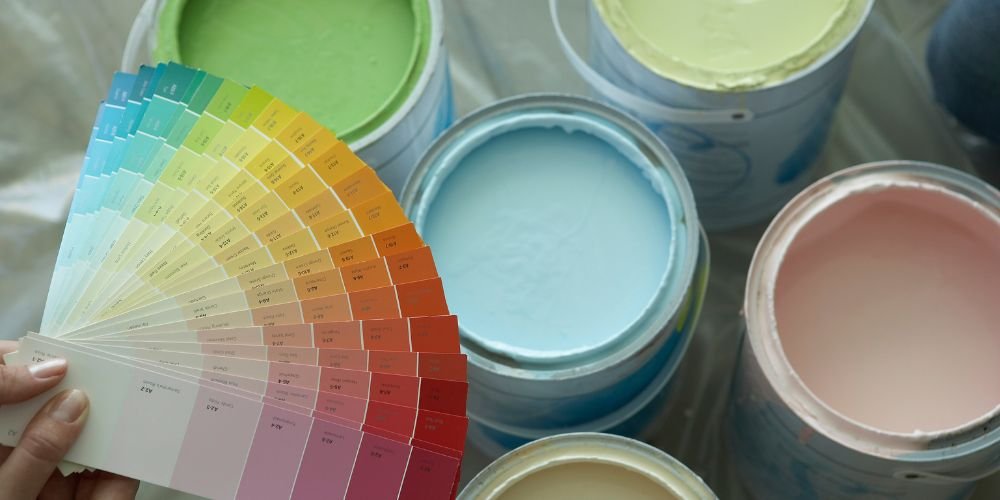
Picking the right paint improves:
- Durability – When paint has been chosen correctly, it can end up lasting in the desired environment.
- Health and Safety – Interior paints maintain VOCs inside the home at low levels; exterior paints help you by being mildew/mould-resistant on the outside.
- Finish Quality – A polished look inside, and a weatherproof shield outside.
- Cost-Effectiveness – Avoid having to repaint too soon.
- Easier Maintenance – Accurate formulas to the paints are simpler to wash without causing harm to the workpiece.
- Better Adhesion – When the right paints are used on the right surface, they adhere more, and peeling and flaking are minimized.
- Protection of Underlying Surfaces – Stops wood decay, rust or wall damage due to moisture, sunlight, or indoor dampness.
It is not merely a technical matter to know the difference between interior and exterior paint, but rather it can be money-saving, time-saving, and can be frustration-sparing.
Paint + Primer Combinations: When to Use Them
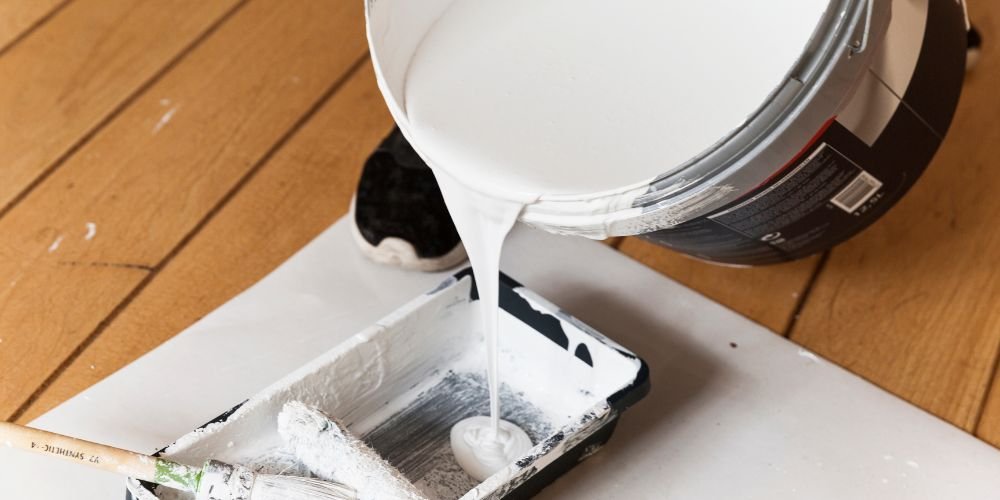
White paint and primer in one is a time and effort-saving product in selected projects. These blends are great for:
- Covering dark walls with light colours indoors
- Refreshing outdoor trim with bright shades
- Reducing the number of coats needed
However, don’t assume all-in-one products work everywhere. Outside work should use an acrylic outdoor paint that is a one-part primer, and low-VOC paint should be used indoors to ensure health safety.
Enamel vs. Latex Paint: Key Differences
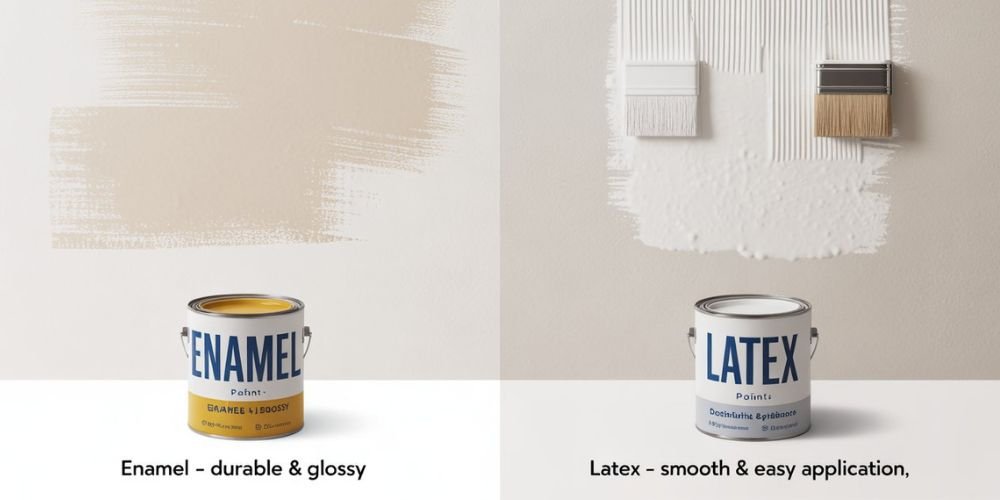
Enamel vs latex is a very common debate when it comes to painting interior and exterior work.
- Enamel Paint: Strong, shiny coating from oil or alkyd paint makes it great for trim and doors.
- Latex Paint: Water, non-toxic and easy to clean, dries fast, releases fewer fumes, and is best applied on walls and ceilings.
Outdoor spaces, such as fences or railings, are strong options with acrylic outdoor paint, and enamel can perhaps work on metals.
Common Myths – Cleared Up
- Myth: Can you use exterior paint inside? – Possible, but unsafe and smelly.
- Myth: Using exterior paint indoors is stronger and lasts longer. It is long-term, but at a cost to indoor air quality.
- Myth: Can you use interior paint outside? – No, it will break down quickly.
- Myth: Enamel is always better than latex. Not true, enamel vs latex is surface and location dependent.
Project-Specific Paint Examples
1. Indoor Painting
For living rooms, bedrooms, or kitchens:
- Use washable interior latex paint
- With regard to traffic and light, select a finish such as matte, eggshell, or satin finish.
- Painting interior exterior is not interchangeable—keep interior paints inside.
2. Outdoor Painting
For porches, siding, and fences:
- Choose acrylic outdoor paint for long-lasting weather protection
- The best paint for porch areas is often a tough, moisture-resistant formula
- Use satin or semi-gloss finishes for easier cleaning
Preparation Tips for Better Results
Whatever surfaces- whether painting interior exterior it is important to do the proper prep.
- Indoors: Clean walls, fill the crack, sand to smoothness and use appropriate primer.
- Outdoors: Clean surfaces, scrape off any loose, chipping paint, rough spots, and use an exterior-grade sealer primer.
When working with the best paint for porch jobs, make sure the surface is clean and dry to allow painting of the porch.
Trending Paint Colours and Textures
Though it is vital to select a proper type of paint, style is an important factor.
- Indoors, light neutrals paired with bold accent walls are popular.
- Outdoors, earthy greens, warm beiges, and classic whites dominate.
In the case of porches, the combination of white paint and primer can be regarded as a timeless solution, providing a fair and clean appearance, particularly in conjunction with the naturalistic wooden furniture or natural outdoor decor.
Conclusion
Choosing the right paint for the right environment is essential for durability, safety, and lasting results. Exterior paints protect against weather, while interior paints ensure a smooth, low-VOC finish indoors. For expert guidance and flawless results, trust AHC Painting & Remodeling to help you pick the perfect paint for every space.
